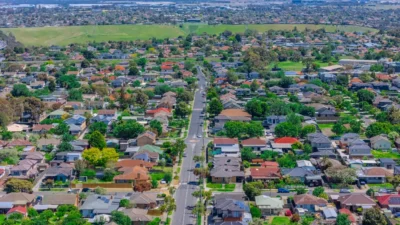Hong Kong’s office space availability rate drops to 13.9% in Q3 2021
The city’s office rental market is gradually recovering, seeing “net absorption” for the first time in two years

After experiencing political unrest in 2019 and the COVID-19 pandemic, Hong Kong’s office rental market is finally starting to show recovery signs, says South China Morning Post.
According to Cushman & Wakefield, the three months to September saw “net absorption” for the first time in two years, meaning more space was taken up than left empty.
The company halved its forecast for the overall average rental decline to between four to six percent, from a range of eight to 13 percent.
In Q3 2021, the average rent per square foot in Hong Kong has already decreased by 26.4 percent from a high of HKD75.9 in April 2019 to HKD55.9.
Keith Hemshall, Cushman & Wakefield’s head of office services, Hong Kong, said, “Compared to the relatively low levels of tenant movement in the second quarter, we saw a resurgence of transaction activity in the third quarter with several notable deals concluded by tenants from within the banking and finance, insurance and business centre [and] co-working sectors.”
Hence, the amount of office space being surrendered – abandoning offices before contract expiration – dropped 12 percent from the previous quarter, a total reduction of 62,000 square feet.
Further, Cushman & Wakefield says that the overall office space availability rate slightly dropped to 13.9 percent in Q3 and will likely continue to decline at a similar pace throughout 2021.
Looking at the retail market, insurance companies were boosting the sector by exploiting lower rents to expand.
Kevin Lam, Cushman & Wakefield‘s executive director, head of retail services, Hong Kong, said, “We are seeing more insurance companies actively expanding, aiming to engage with potential and existing customers further. We anticipate insurance service centres may be an upcoming trend, taking advantage of the lowered retail rentals.”
Lam said that most districts saw improvement in retail space occupancy levels, with Central and Mong Kok coming out on top.
More: Hong Kong retail landlords saved after 10% decline in Q2 2021
Moreover, Cushman & Wakefield managing director John Siu mentioned that the government’s recent plans to develop the Northern New Territories will lead to a rise in the white-collar working population, followed by higher demand for office buildings.
“It will also stimulate the local retail and food and beverage [sector],” Siu added.
The Property Report editors wrote this article. For more information, email: [email protected].
Recommended
Inside Asia’s luxury resort residences that are redefining high-end living
Asia’s resort residence market is witnessing a shift as investors eye larger, multifunctional units
How joining BRICS could give Thailand and Malaysia a new economic edge
Thailand and Malaysia are eyeing membership in the bloc of emerging nations
How Modi’s real estate reforms are transforming India’s housing market – and what’s next
A coalition led by the strongman prime minister Narendra Modi is looking to consolidate gains in the property market
Why Japan’s new interest rates might spark a transformation in Niseko’s property market
A new era for Niseko’s wintry property market dawns with the sunset of Japan’s negative rates regime








